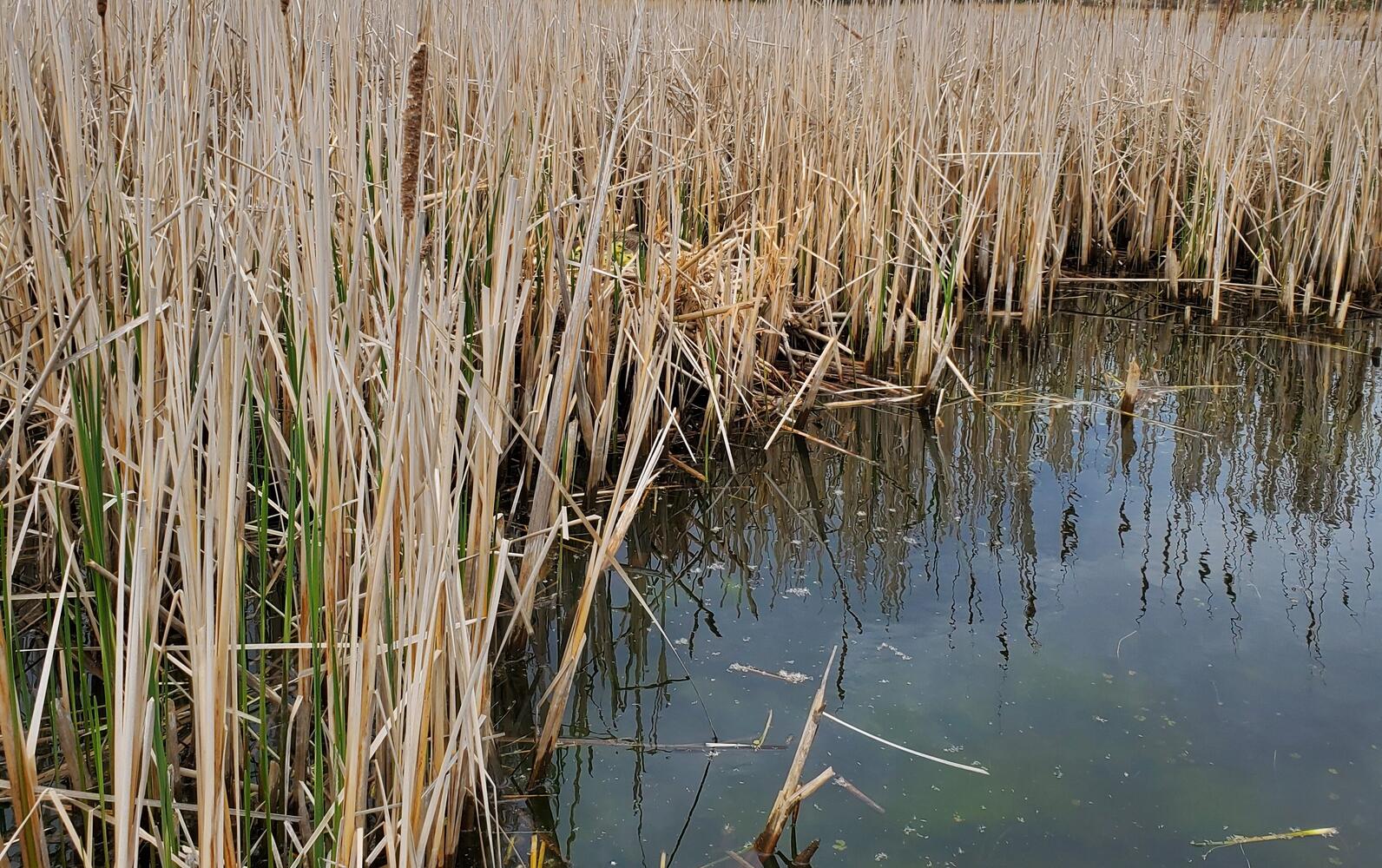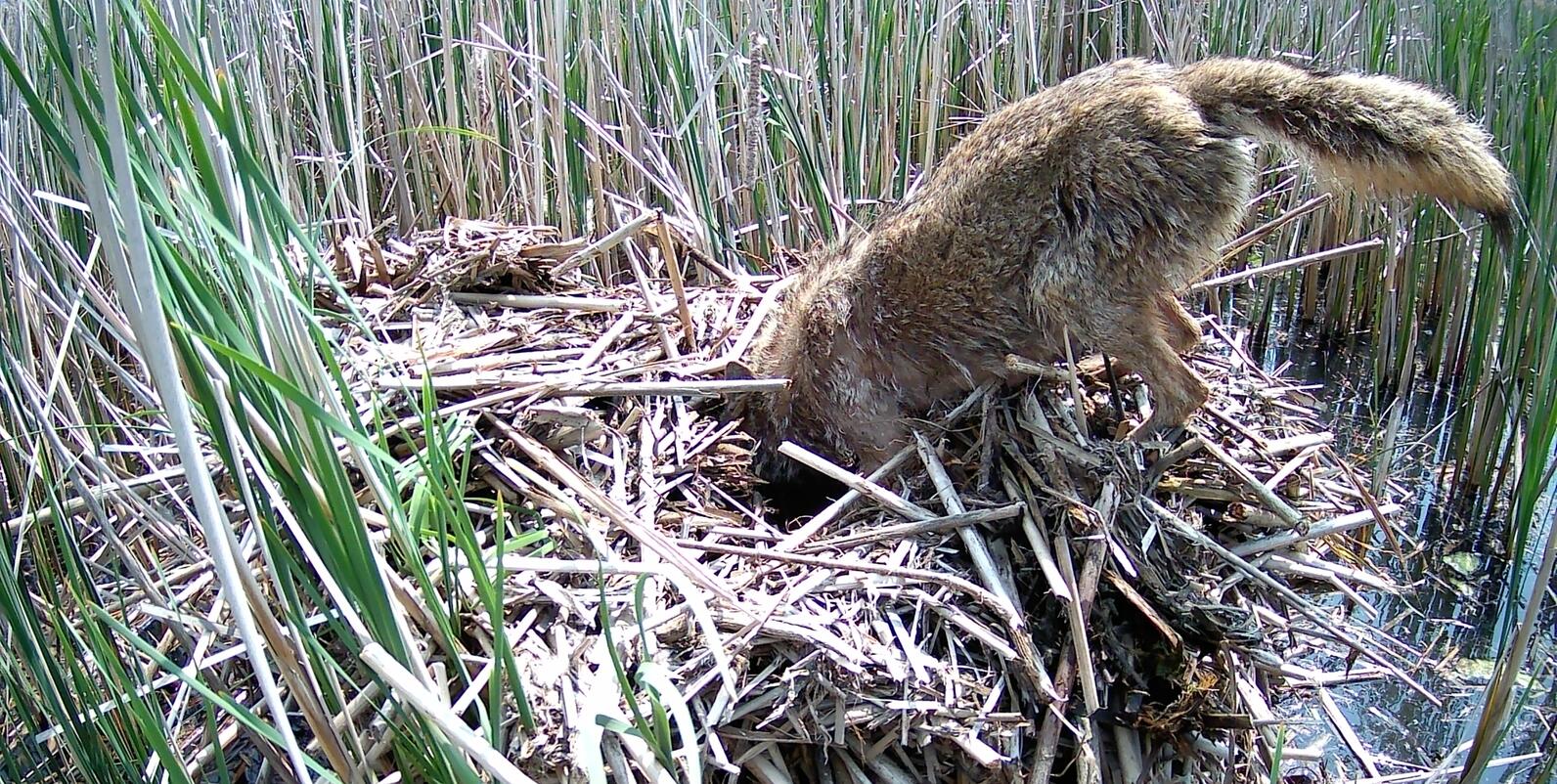Muskrats are truly mighty. They are ecosystem engineers of Midwest marshes and prolific eaters. In the Calumet region, at the border of Illinois and Indiana touching Lake Michigan, many wetlands are populated with very dense reeds and cattails. This thick vegetation isn’t optimal for many marsh birds or other animals. It’s dense, and hard to even walk through as a person. With their prolific appetite, muskrats can quickly mow down vegetation, which they use to construct enormous dens. They live inside them throughout the year and raise their babies, called kits.
As a part of my internship with Audubon Great Lakes, I worked with the conservation team doing field research on these mighty animals in the Calumet region. We set up cameras in the marsh to take photos so we can understand what animals might benefit from the openings that muskrat dens generate in the marsh.
Simply by creating their homes, muskrats create openings within the densely vegetated landscape, generating conditions that are beneficial to other animals such as birds. High densities of muskrat dens can change the marsh radically, helping to create more areas of interspersed open water. An even balance between marsh vegetation and open water is called “hemi-marsh,” and healthy hemi-marsh is key for many animals, including the marsh birds we monitor at Audubon Great Lakes. Muskrats directly help generate hemi-marsh, and this structurally diverse and balanced landscape offers marsh birds the habitat they need for nesting and foraging. Many marsh birds that Audubon monitors are threatened by habitat loss throughout the Great Lakes and many of their populations have declined, so studying factors that may assist them is important for bringing marsh birds back.

The fieldwork to set up and maintain these cameras looking at muskrat dens was an adventure. While setting up cameras, I got quite a surprise. About 10 feet away from a den, I realized that there was a Canada Goose with 5 goslings, or young baby geese, on top of it. The goose was very calm and kept an eye on me but didn’t make any move, and I just backed away quietly with an armful of cameras. I was incredibly impressed at how well they camouflage into marshes, especially in dense vegetation! Geese nesting atop muskrat dens is actually somewhat common, and it was exciting to see it in person. Muskrats provide the geese with a platform that’s an ideal size and height above the water for a nest, and easy for the goslings to climb down from.
After retrieving the data from my cameras, I wondered if having a goose as an upstairs neighbor could be a potentially beneficial arrangement for the muskrats. My cameras captured a predation event, where a coyote ate the muskrats inside the den. Interestingly, both muskrats and goose nests are common targets for coyotes, and coyotes are even capable of killing adult geese.

In a study in the Chicago region, coyotes were responsible for over 75% of nest predation for Canada geese. So I am not sure if having a goose on your roof is overall a deterrent or a draw for coyotes in a marsh, but at the very least, a vigilant goose on your roof would lessen the element of surprise. Either way, I think for both muskrat and goose parents, it highlights that raising kits and goslings in Calumet marshes is incredibly challenging. Despite being very different animals, they happen to be neighbors who are in the same boat.

I am currently working on finishing processing and analyzing the camera data, and publishing this research. I aim to report which marsh birds make use of the gaps generated by muskrat dens in the Calumet region, and how they use that space, whether it be nesting, foraging, or commuting through the marsh.
This work was funded by National Science Foundation INTERN, which provides graduate students with opportunities to complete a research internship and get experience working in non-academic career pathways. I’m currently a PhD student at Duke University, and my research focuses on the impact of animal recolonization on ecosystem structure and diversity. Getting a chance to work with Audubon Great Lakes and take a passion for birding and incorporate that into my research was deeply joyful. This internship gave me the tools and experience to further apply my doctoral work to pressing conservation issues.
This blog was authored by Leo Gaskins, Audubon Great Lakes conservation intern and PhD student at Duke University




